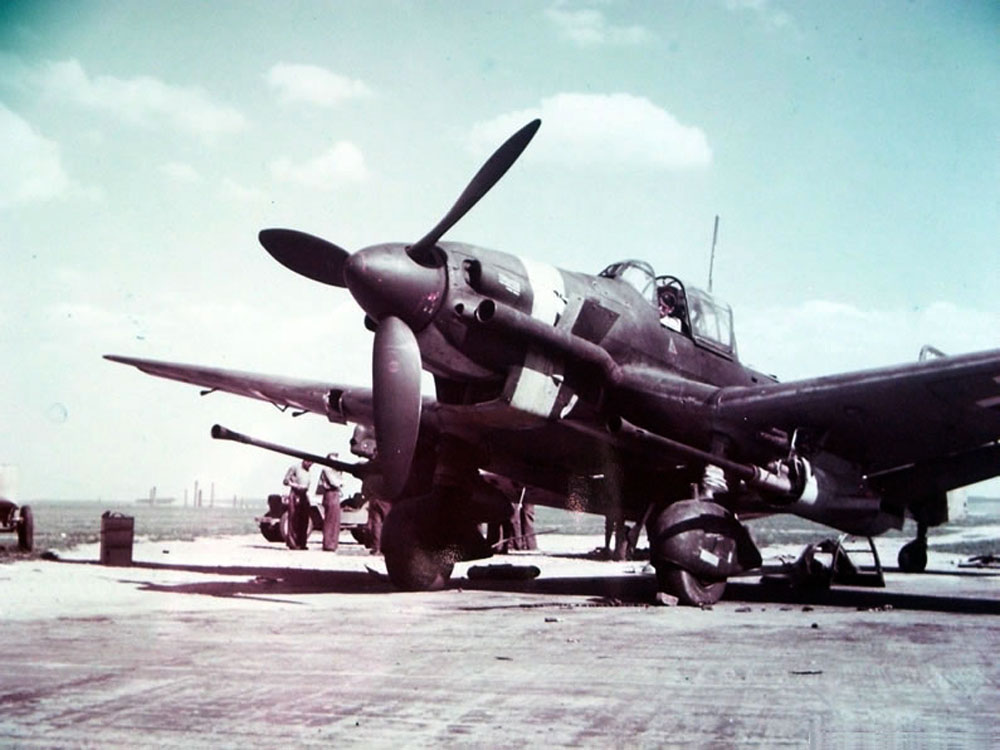

There was another burst, and when that ended Emelianenko jumped from the cockpit and fell flat on the ground as German machine pistols opened up. He looked about to get his bearings as a burst of machine-gun fire struck the plane’s heavy armor plating. He was miraculously still alert as the dust settled around him. The engine finally seized up, and Emelianenko released the robust landing gear and came roaring down on the rocky soil at more than 60 miles per hour. The pilot skimmed the terrain, and every spin of the propeller pulled him ever closer to the safety of the Soviet lines. The experienced pilot knew he had five minutes at best before the engine seized as he frantically maneuvered toward the safety of the Soviet lines. The oil pressure plummeted toward zero, and the water temperature soared. His wingmen dropped their granular phosphorous, which spread the flames that roared even higher into the sky.Įmelianenko worked desperately to pull his plane above the wall of tall pines located beyond the airfield, but the plane was hit in the engine. Emelianenko’s machine guns then erupted, and the bombers caught fire. He worked swiftly, straightening the plane and firing a salvo of rockets into the parked enemy aircraft.

Emelianenko had lowered the nose of his plane for the attack when he heard a deafening sound and the craft jolted suddenly as a large hole burst open in his right wing. The Il-2 planes banked slightly to rise above the hill to their front, and the ground gave way as they spotted two rows of German bombers lined up neatly on the airfield ahead. The intercept helped set the stage for an Allied victory in the Pacific.Vasily Emelianenko led an Ilyushin Il-2 Sturmovik, or “Storm Bird,” flight in late June 1942 against a German-held airfield near Artemovsk in eastern Ukraine, flying low up a deep ravine to avoid detection. After intercepting the admiral and his escort of Zero fighters, Japanese naval morale was crushed, and Allied morale soared. It proved to be a turning point in the war. installations in Hawaii, sixteen P-38 pilots were dispatched to fly a five-leg, nearly 1,000 mile-long mission.
Ww2 tank buster aircraft code#
And in 1943, when code breakers learned of a key inspection flight in the Pacific by Japanese admiral Isoroku Yamamoto, architect of the attack on U. When a long-range battle-tested airplane was needed for the Allies’ first round-trip mission to Berlin, a modified P-38 was chosen. Destroyed entrenched pillboxes and shot down numerous fighters and bombers in all theaters of war. Its versatility and ruggedness were legendary. It also doubled as an intimidating long-range threat, capable of carrying a larger payload than early B-17s and boasting a range of 1,150 miles.

Upon its official introduction in 1940, the P-38 was capable of climbing to 3,300 feet in a single minute and reaching 400 mph, 100 mph faster than any other fighter in the world. Hibbard and his then assistant, Clarence “Kelly” Johnson, the twin-boomed P-38 was the most innovative plane of its day, combining speed with unheard-of advances: two supercharged engines and a potent mix of four 50-caliber machine guns and a 20-mm cannon. The P-38 had been given a new nickname: the “fork-tailed devil.”įirst conceived in 1937 by Lockheed chief engineer Hall L. officials realized the focus of the pilot’s madness. Within six months, as the P-38 showed its versatility in North Africa, a lone hysterical German pilot surrendered to soldiers at an Allied camp near Tunisia, pointing up to the sky and repeating one phrase- “der Gableschwanz Teufl”-over and over. The pilot, pumping 409 rounds per minute from its nose-mounted machine guns, dispatched the Condor in seconds, marking the first successful American engagement of a German aircraft during World War II. With its distinctive design, the P-38 was sleek but its twin tails gave the Lightning a radical new look. Its crew had never encountered anything quite like it before. The aircraft’s target, was a German Focke-Wulf Fw-200 Condor patrol bomber. True to its name, the P-38 was akin to a force of nature: fast, unforeseen, and immensely powerful. The pilot in a new American fighter, the P-38 Lightning, peeled down from the skies over Iceland on August14, 1942.


 0 kommentar(er)
0 kommentar(er)
